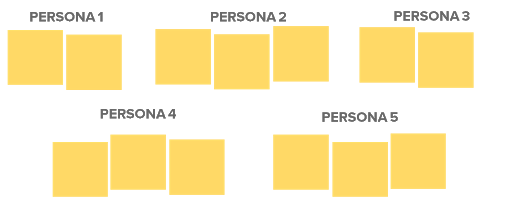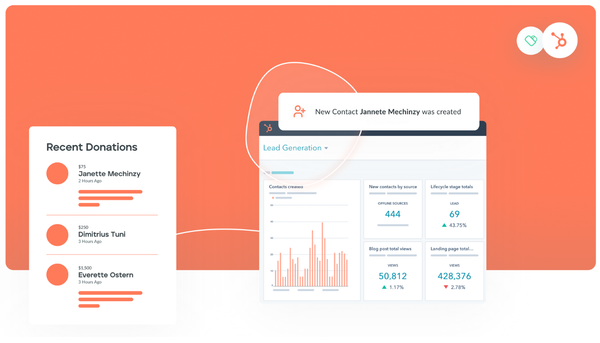5 Tips for Writing Effective Fundraising Messages for Your Target Audience
Connecting with your nonprofit's audience is vital. Explore this quick guide to learn how to write effective fundraising messages for your target audience.

Connecting with your nonprofit’s target audience can be hard. How do you know if your messaging is resonating, and how can you feel confident that the approach you are taking is going to deliver results?
We often pour our heart and soul into writing fundraising appeals, but unless the messaging resonates with your nonprofit donors, it hasn’t served its purpose.
The challenge is that your target audiences may be motivated by very different things (building community, efficient use of funds, broad systems change, etc.). So, how do we build fundraising messaging that will get them to engage and take action?
The good news is that here at Rootid, we have created a simple framework for nonprofits to use that will connect their messaging directly with the motivations of their donors. Here are the 5 steps to success.
1. Know Your Nonprofit Target Audiences
You may be tempted to gloss over this one because you interact with your supporters on a daily basis. Of course you know them!
The thing is, your success depends on getting this part right. It’s foundational. If you have never done surveys or stakeholder interviews, it’s time to start doing them regularly. They are an invaluable tool to gathering insightful data.

Remember, things change. These days, things change rapidly!
A donor that cares about one program today, may care about another tomorrow. So, using stakeholder interviews and surveys to understand the shift in your target audiences’ preferences is critical to shaping your fundraising messaging.
Schedule one-on-one interviews or send out surveys to the good folks who interact with your organization. These will help you validate:
- Why donors believe that your organization is uniquely positioned to carry out the work you do;
- How they see you as different from other organizations that work in the same space as you;
- What motivates them to engage and support your organization;
- The best way to message or frame the work that you do;
- The most effective marketing channels to use to deliver your fundraising message (direct mail, social media, mail, etc) to use for your donors.
For more details on designing, performing and analyzing stakeholder interviews, check out our full guide.
2. Creating Nonprofit Donor Personas
After completing your stakeholder interviews, you’re ready to create personas.
If you haven’t heard of personas before, they are semi-fictional characters that represent your ideal donors or nonprofit constituents.
Donor personas are important because they help us surface and group your audiences based on motivations. By grouping your audiences into personas and understanding their motivations, we will later be able to craft very targeted messaging that will resonate with your audience and encourage them to take action.
Some common things that we’re looking for when creating personas are:
- Demographics (ex. age, gender, location, etc.)
- Beliefs (ex. Political positions, cultural priorities, etc.)
- Motivations (ex. Building strong relationships, statistical impact and efficiency, broad systems change, etc.)
- Preferred methods of communication (ex. Phone, email, social media, mail, etc.)
Here is a quick step-by-step guide on how to create a persona:
Step 1: Do Your Best to Remove Bias
Gut check time! No matter how unbiased we feel we are, we all have lived experiences through which we view the world. This is not an accusation, but something that we need to consider when building personas based on motivations. This is the time to ask ourselves “how do my lived experiences contribute to my understanding of others?” “How do my beliefs or identities cloud my understanding of the situation?” “What privilege or power do I hold in this process?”
By acknowledging these things, we can often be more conscious of removing them from our work.
Step 2: Identify Your Audiences
Now it’s time to list out as many real people that interact with your organization as you can. These can be donors, volunteers, board members, partners, etc. This is also an important time to reach out to your colleagues and ask them to provide real individuals that they interact with.
When you are recording your audiences, pay close attention to their motivations. That will help in the next step.
Step 3: Group Audience by Motivations
At this point, you should have at least 25 real people written out on post-it notes or in a spreadsheet (check out our guide below to download our persona development worksheet). Pay close attention to their motivations.
You may start to see some patterns emerge in that motivations column.
Group individuals based on common motivations and pain points that they have. You may also see some similarities around shared goals and outcomes. These groupings are now your personas!

Step 4: Record Your Personas Where Your Whole Organization Can Use Them
Now that you’ve completed your personas, we recommend recording them in an area where your whole organization can see, like a brand style guide, or posted on a wall in your office. This will remind everyone about what is motivating your constituents.
For more help building donor personas, check out our free guide.
3. Construct Better Messages
Now that we know more about your donors and what motivates them, we can work on the core pieces of your fundraising messaging.
As Simon Sinek stated in his now-famous TedTalk, "People don't buy what you do, they buy why you do it."

His Golden Circle model is a communications hierarchy that inspires action, based on human instincts. For the purposes of this post, let’s consider how we would use this structure to build an elevator pitch for your organization.
The Why: Start with Your Purpose
Start your messaging by connecting with your personas on a visceral level. Your messaging should start with the core values and make clear what is at stake.
For example, let’s take an organization that protects rivers. Are they protecting rivers to provide clean drinking water, or protect natural resources for recreational use, or to restore natural habitat? All of these are different core purposes.
The How: Connect to Your Core Values
How is your organization uniquely positioned to address the problem that was outlined in the Why? What makes this approach particularly effective?
So following on the example above, does the organization protect rivers by empowering volunteers, or building coalitions of local environmental organizations, or some other method?
The What: Delivering Impact
The final element of your messaging outlines what you envision the impact of your work being. Make sure this ties back to your original “why.”
Again, using our river conservation example, if the purpose of their work is to provide clean drinking water we should tie the impact back to their core values.
Putting all of this together, here’s an example:
Clean water is critical to community health and safety. We partner with local organizations around the world to restore rivers in order to provide long-lasting, safe and clean drinking water to support healthy, vibrant communities.
For more help building better messaging, check out our free guide.
4. Write a Compelling Call-to-Action
Every fundraising piece, whether it is a direct mail piece, grant application, email or social post, needs a clear call to action.
The first thing to consider when writing your call to action is to make it clear and concise. Do not be shy about asking for a specific donation or action. Also, provide a time-based period in which to take action.
Secondly, connect the donation with the impact that it will have. If a $20 donation will allow your organization to serve 100 more people, make that explicit. Donors often like to see concrete connections between their giving and outcomes.
Finally, build urgency into your call to action. A great way to do this without being “salesy” is to offer a donation match for a fixed period of time.
No matter what you do, make sure that you always have some kind of next steps outlined for your donors to take.
5. Test Your Fundraising Messages with Your Target Audiences
Top communicators constantly learn, refine, and improve their process. Here are a few smart ways to gather intel that will optimize your campaign messaging.
First, if you are fundraising through email, test the messaging in the body of the email and/or the email subject line. Most email service providers will allow you to A/B test many different aspects of your email. Take advantage of that!
Secondly, ask your donors using surveys or stakeholder interviews. Do they feel moved to take action by a particular message? Why? What emotions do certain messages evoke for them? Remember that going directly to the source can be a very powerful way to gather information.
Lastly, if you are sending donors to a website donation page, use A/B testing to see which messaging drives the most donations. Many donation platforms will provide this. You can also use a free service like Google Optimize to A/B test the messaging on the landing page.
Putting it All Together
Effective communication comes from knowing your audience. Conducting stakeholder interviews and surveys will help you figure out what motivates your donors. Then you can group the characteristics of like minded individuals into personas. From there, it’s simply a matter of framing your message, including compelling calls-to-action, and adjusting based on how it’s all received.
Now you’re ready to produce better, more effective messaging that results in more donations!
Guest Author: Andrew Goldsworthy
Andrew is passionate about using the power of technology to empower mission driven organizations. He has been co-designing marketing and fundraising strategies for the last 20 years, and loves experimenting to drive results. He's also an avid outdoorsman. Frequently camping, skiing, fishing and fending off mosquitos.





